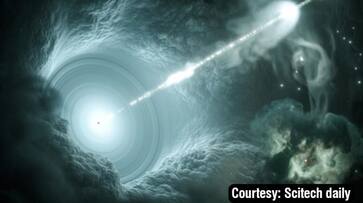Headed by Alok Chandra Gupta from Aryabhatta Research Institute of Observational Sciences (ARIES) Indian scientists have discovered BL Lacertae, a strong flare from a feeding supermassive black hole, referred to as a blazar
Bengaluru: In a proud moment for India, its scientists, headed by Alok Chandra Gupta from Aryabhatta Research Institute of Observational Sciences (ARIES) has discovered BL Lacertae, a strong flare from a feeding supermassive black hole, referred to as a blazar.
As per a Times of India report, It is considered to be one of the oldest astronomical objects and can assist in tracing the mass of the black hole and the source of this emission.
How will it help in finding more on the evolution of the universe:
It is reported that this discovery will help in uncovering events which have taken place at different times of the universe.
It was discovered on 16th January through the support of 1.3m Devasthal Fast Optical Telescopes and the Sampurnanand Telescope.
Times quoted Gupta as saying, “This class of objects is very unique. They have complete electromagnetic emission, that is they emit radiation in all electromagnetic bands — Radio Waves; Microwaves; Infrared; Visible Light; Ultraviolet (UV); X-Rays and Gamma Rays — which is not something all objects can do. Gamma ray births do this, but they are short lived.”
Gupta further added, “BL Lacertae blazar is 10 million light-years away and is among the 50 most prominent blazars that can be observed with the help of a relatively small telescope. It was among the three to four blazars that was predicted to be experiencing flares by the Whole Earth Blazar Telescope (WEBT), an international consortium of astronomers.”
Last Updated Feb 11, 2021, 6:29 PM IST









![Salman Khan sets stage on fire for Anant Ambani, Radhika Merchant pre-wedding festivities [WATCH] ATG](https://static-gi.asianetnews.com/images/01hr1hh8y86gvb4kbqgnyhc0w0/whatsapp-image-2024-03-03-at-12-24-37-pm_100x60xt.jpg)
![Pregnant Deepika Padukone dances with Ranveer Singh at Anant Ambani, Radhika Merchant pre-wedding bash [WATCH] ATG](https://static-gi.asianetnews.com/images/01hr1ffyd3nzqzgm6ba0k87vr8/whatsapp-image-2024-03-03-at-11-45-35-am_100x60xt.jpg)


